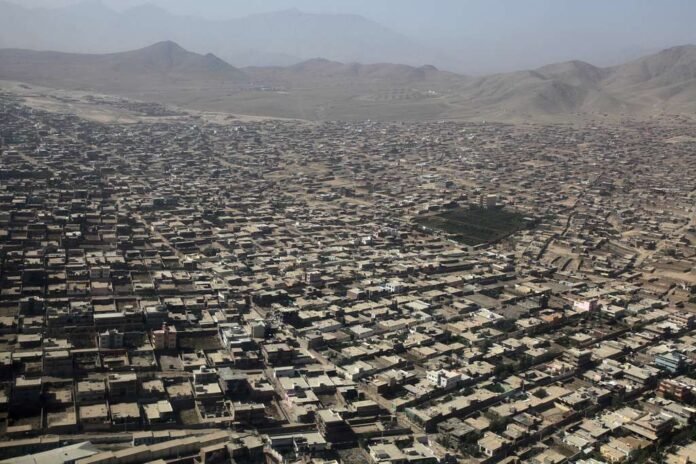Afghanistan’s health insurance is evolving, with a small public role and a growing private sector. Public and private options serve different groups, offering diverse services and coverage levels.
Differences
1. Scope and Availability:
Afghanistan’s public health insurance is minimal. The Afghan National Insurance Company (ANIC) provides various insurance services, but health insurance is not its main focus. The country lacks a comprehensive national or social health insurance system. Conversely, private insurers such as the Insurance Corporation of Afghanistan (ICA) and Capital Star Insurance (CSI) offer specialized health insurance plans for individuals, groups, and organizations, mainly in urban areas like Kabul.
2. Target Demographics:
Public insurance targets government workers and the general public, but access and awareness are limited. Conversely, private insurance is common among expats, NGO staff, corporate clients, and wealthier individuals. This split leaves rural and low-income groups dependent on out-of-pocket expenses.
3. Plan Features and Customization:
Private providers offer diverse, customizable plans. ICA provides group health plans with different coverage levels: Essential, Comprehensive, and Executive. These include inpatient/outpatient care, maternity, dental, and medical evacuation benefits. CSI offers plans without an initial medical exam and covers pre-existing conditions after 365 days. ANIC lacks detailed, flexible health insurance options.
4. Accessibility and Reach:
Private insurers mainly operate in urban areas such as Kabul, Herat, and Farah. Public insurance, while intended for wider access, lacks the necessary infrastructure and systems to effectively reach the whole population.
Similarities
1. Multi-line Insurance Offerings:
In Afghanistan, insurers—both public and private—offer more than health coverage. They provide various insurance products like vehicle, travel, fire, and accident insurance. This diverse offering is a strategic response to the limited size of Afghanistan’s insurance market, ensuring companies stay competitive.
2. Focus on Institutional Clients:
Insurance companies, both public and private, prioritize organizations, businesses, and NGOs over individuals. This strategy enhances risk management, boosts client retention, and increases profitability.
3. Struggles with Market Penetration:
Both sectors struggle with outreach, trust, and awareness. Afghanistan’s healthcare system depends largely on personal expenses, with over 70% of costs paid by individuals. Insurance, public or private, is still a new idea for many.
Top Public Health Insurance in Afghanistan
Afghanistan lacks a comprehensive national health insurance system. Its public health insurance options are minimal, with only one government-owned entity offering limited health coverage. This entity is the Afghan National Insurance Company (ANIC), which provides restricted health insurance as part of its broader services.
1. Afghan National Insurance Company (ANIC)(Official Website: https://www.anic.gov.af)
- Type: Government-Owned
- Founded: 1964
- Headquarters: Shahs Darak, Kabul
- Official Website: www.anic.gov.af
Cost
ANIC’s health insurance pricing is not standardized publicly, as it relies on case-based and contract-specific negotiations. Costs are determined by factors such as organization size, number of people, and coverage type. Individual premiums vary by coverage package, like accident-only or comprehensive, with average costs between AFN 2,000 and AFN 10,000 annually per person. Group rates might be cheaper per person.
Available Services / Coverage Features
ANIC does not offer an extensive standalone health insurance plan. Instead, it provides limited health-related insurance services under broader insurance categories, such as:
- Personal accident insurance (coverage for injury or disability due to accidents)
- Student and employee accident insurance
- Travel and medical emergency coverage
- Limited health expense reimbursement (negotiated per client)
ANIC provides health services through accident and liability policies, not through a full medical insurance plan for outpatient or inpatient care.
Open for All or Limited Access
ANIC’s services are available to everyone, but mainly serve government bodies, public workers, and state organizations. Access for rural or low-income groups is restricted by infrastructure issues, low awareness, and limited promotion.
Core Financial Features
- Premiums are set yearly or bi-yearly, based on risk and group size. Deductibles and co-pays are negotiated per contract. Claims are processed manually, requiring documentation, often causing delays. The provider network is limited, lacking a strong hospital or clinic presence. Claims are reimbursed post-treatment, not settled directly with providers.
Consumer Satisfaction Score
ANIC’s health insurance lacks official consumer satisfaction scores due to insufficient surveys and performance data. However, feedback from public sector users indicates moderate trustworthiness because it is government-backed. Service speed is rated low to moderate, with delays in claims being a concern. Coverage satisfaction is low, mainly due to limited services and lack of transparency.
Top 5 Private Health Insurance Providers in Afghanistan
Afghanistan’s private health insurance sector is expanding, mainly catering to city dwellers, international bodies, expatriates, NGOs, and businesses. Five key companies lead this market, providing specialized health plans for specific groups, differing in accessibility, quality, and cost.
1. Insurance Corporation of Afghanistan (ICA)(Official Website: https://www.icaaf.com)
- Founded: 2007
- Headquarters: Kabul
- Website: www.icaaf.com
Cost:
Premiums differ by coverage level: Essential costs around USD 600–800 annually, Comprehensive is USD 900–1,200 per year, and Executive ranges from USD 1,500 to 2,000 yearly. Group plans provide discounted rates for organizations.
Available Services/Coverage Features:
- Inpatient and outpatient care, maternity services, emergency dental care, medical evacuation (including air transport), and prescription drug coverage.
Open for All or Limited:
Open to individuals, expats, organizations, and NGOs. Mostly focused on urban areas, especially Kabul.
Core Financial Features:
- Direct billing with partner facilities. Annual deductible: $100–$500. Coverage limit: $25,000–$100,000 per year. Reimbursement within 14–21 business days.
Consumer Satisfaction Score:
- Corporate clients and expats rate this service highly, scoring it 8.5 out of 10. Its strengths include international-standard coverage and excellent customer support. However, it has limited access in rural areas.
2. Afghan Global Insurance (AGI)(Official Website: https://afghanglobalinsurance.com)
- Founded: 2010
- Headquarters: Kabul; branches in Herat and Farah
- Website: www.afghanglobalinsurance.com
Cost:
- Individual plans begin at AFN 10,000 annually. Corporate group plans are tailored and priced individually.
Available Services/Coverage Features:
- Hospital stays and surgeries, outpatient appointments, emergency services, and conditional coverage for pre-existing conditions.
Open for All or Limited:
Available to individuals and corporates. Focused primarily on urban and semi-urban populations.
Core Financial Features:
- Reimbursement model with low to moderate deductibles. Basic plans don’t need a medical exam. Offers flexible group packages.
Consumer Satisfaction Score:
- Afghan businesses face moderate to high challenges. Their score is 7.5 out of 10. Strengths include a nationwide presence and strong customer focus. However, they struggle with slower claims processing in remote areas.
3. Capital Star Insurance (CSI)(Official Website: https://capitalstarinsurance.com)
- Founded: 2019
- Headquarters: Kabul
- Website: www.capitalstarinsurance.com
Cost:
- Individual plans range from AFN 9,000 to 15,000 annually. Group discounts can reach up to 25%.
Available Services/Coverage Features:
- Inpatient and outpatient care are covered. Pre-existing conditions are covered after 365 days. Coverage applies to individuals from 15 days old to 60 years old. Work injuries and travel-related illnesses are also covered.
Open for All or Limited:
Open to individuals, companies, NGOs, and governmental agencies.
Core Financial Features:
- No initial medical exam. Flexible premium payments, either quarterly or annually. Claim reimbursements processed within 10–15 working days.
Consumer Satisfaction Score:
- New clients rate responsiveness highly, scoring 8.2/10. Strengths include affordability and modern services. Weaknesses lie in developing hospital partnerships.
4. Khair Khaw International Insurance (KII)
- Founded: 2019
- Headquarters: Kabul
- Website: Not publicly available
Cost:
- Affordable premiums; approx. AFN 8,000–12,000/year for basic health coverage
Available Services/Coverage Features:
- Health insurance options include general and limited plans, as well as group and corporate coverage. These plans primarily offer basic outpatient and hospitalization benefits.
Open for All or Limited:
Open to government clients, NGOs, civil society groups, and individuals. Still limited in scope and accessibility.
Core Financial Features:
- Flexible plan structure, reimbursement system, undisclosed coverage limits.
Consumer Satisfaction Score:
- 7.2/10. Strengths: cost-effective, growing market presence. Weaknesses: lack of transparency, limited digital reach.
5. InterHealth Afghanistan(Official Website: https://interhealth.af)
- Founded: Unknown
- Headquarters: Kabul
- Website: www.interhealth.af
Cost:
- Insurance premiums range from $600 to $1,500 annually, depending on the package.
Available Services/Coverage Features:
- Primary care, inpatient and outpatient services, emergency evacuation and stabilization, wellness, and chronic care management.
Open for All or Limited:
Targeted toward expats, international agencies, and urban clients.
Core Financial Features:
- Direct billing with partner clinics, focus on preventive care, and collaborations with global providers.
Consumer Satisfaction Score:
- Expat and NGO sectors rate highly, scoring 8.8/10. Strengths include excellent service quality and adherence to international standards. However, it’s costly for local residents.
READ MORE: Private and public health insurance of Colombia (Make informed choices)


